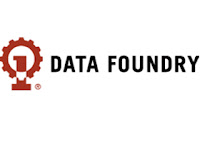Disaster recovery and business continuity planning are important requirements for many modern businesses, both from a customer service and regulatory perspective. Data loss and system disasters are becoming increasingly widespread, as more and more businesses rely on increasingly complex transaction and customer relationship software. This is caused by today’s rapidly changing computer technology and increased data volumes, as well as increased data storage requirements. As modern network models begin to dominate, businesses see increased threats to data security.
The Main Causes of Data Center Failure
There are numerous factors that can lead to data center failure, especially in the IT sector or other companies where most of the data exists in an electronic format. Any business that depends on computers for storing and using data is at risk. A few situations that could lead to disaster in a data center are:
1. Natural Disasters – While these disasters only account for about 2% of data loss, the effects of flooding, hurricanes and earthquakes should not be overlooked.
2. Software Corruption – One of the most widely recognized causes of data loss and system downtime.
3. Hardware or System Problems – For example, if a RAID system’s cooling process collapses, its drives could overheat and fail.
4. Crucial server failure – Failure of business-critical servers can lead to downtime on services such as e-mail, bringing communication to a halt.
5. Computer Viruses – With new virus strains or OS vulnerability emerging almost daily, hacking and malicious code intrusion represent a continuous threat to Internet accessible systems.
6. Human Error – Human error accounts for around 32% of all data loss, although most mistakenly deleted data can be easily restored.
The Financial Implications of Data Loss and System Failures
Data loss and server downtime are very costly for businesses, especially when a company doesn’t have a disaster recovery plan in place. Even a small, short-term outage could result in significant data and business losses. Given these uncertain economic times, this could ultimately result in business failure.
The chart below shows the costs incurred to businesses from server downtime and lost data:
Industry Sector Lost Revenue Per Hour
Energy $2.8 million
Telecommunications $2.0 million
Manufacturing $1.6 million
Financial Institutions $1.4 million
Information Technology $1.3 million
Insurance $1.2 million
Retail $1.1 million
Pharmaceuticals $1.0 million
Banking $996,000
Source: IT Performance Engineering & Measurement Strategies: Quantifying Performance Loss, Meta Group, October 2000.
Legal Implications of Disaster Recovery Planning
Along with the financial implications of disaster recovery planning, businesses must consider the issue of regulatory compliance. Increasingly, businesses face the challenge of meeting new compliance regulations. Recent laws, such as the Sarbanes-Oxley Act, require that sensitive data be stored safely, where it is correctly maintained and can be retrieved immediately.
How to Safeguard Data and Systems
Prevention is the key to disaster recovery. The most important method for preventing loss of important data and facilitating business continuity is the creation of a remote back-up system. This method prevents future data losses and allows a business to keep downtime to a minimum during disaster recovery, keeping critical business systems and processes up and running continuously.
The first step to establishing a disaster recovery system is selecting a remote site to co-locate business critical equipment. This ensures that even in the event of a natural disaster, the time it takes to restore normal service is kept to a minimum.



